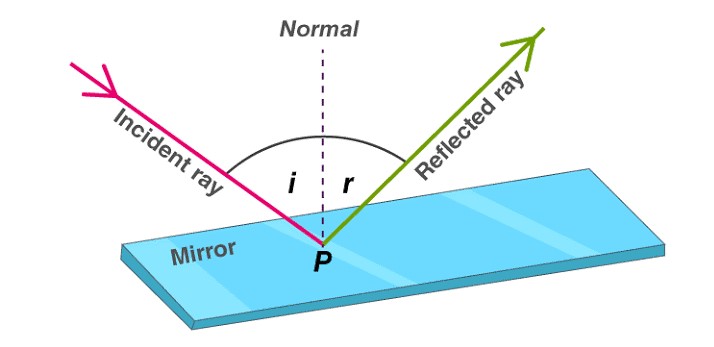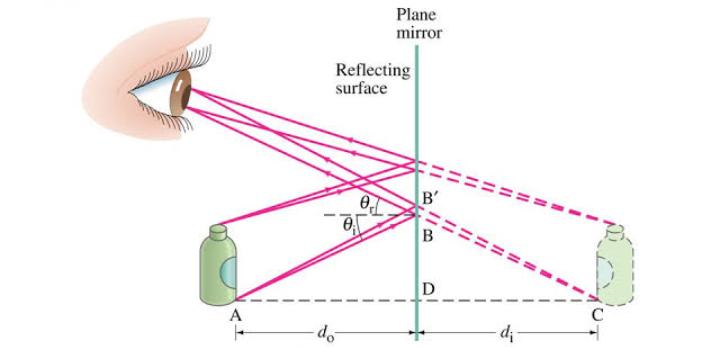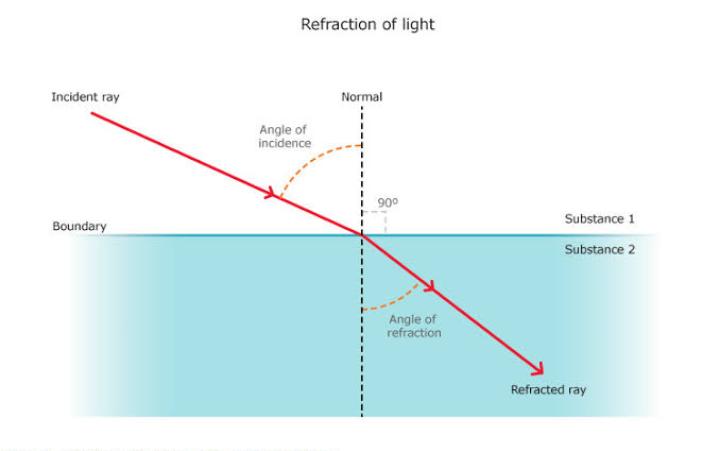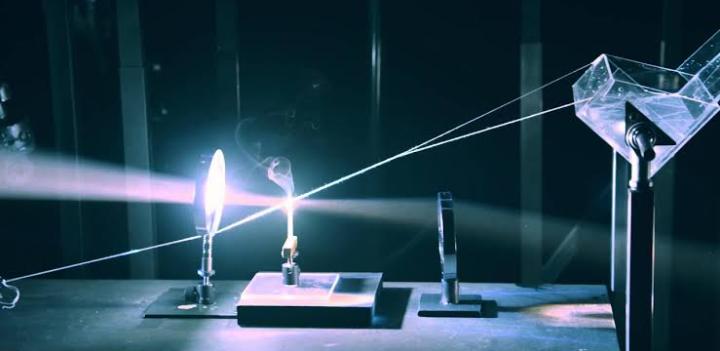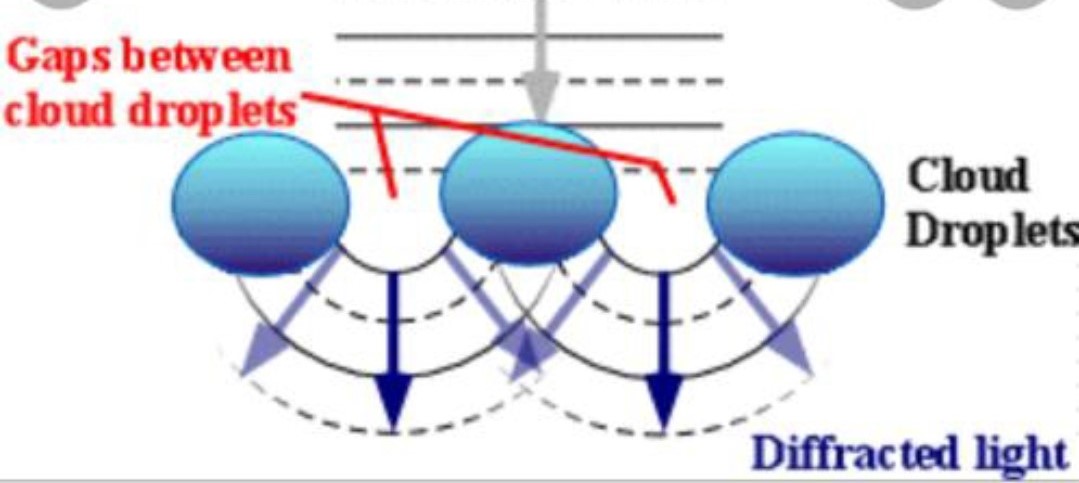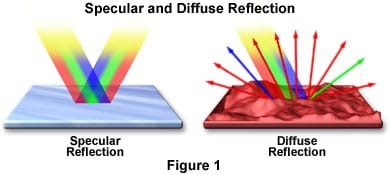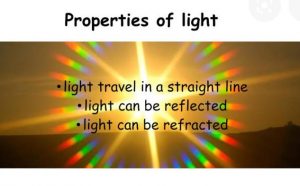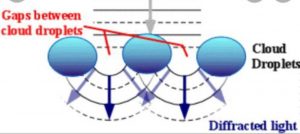What is reflection?
Reflection is the process of bouncing back of wavefront from a plane surface when a ray of sound or light is independent on that surface. it is a phenomenon in which the direction of the wavefront at the surface of meeting of two different media so that the light could bounce back into the same media from which it has been originated.
Certain components are present in the process of incidence and reflection. Here the ray which is falling on the surface of the mirror is known as the incident ray. The ray bouncing back from the surface of the mirror is known as the reflected ray. It is known as the angle of incidence and r is known as the angle the reflection. The perpendicular drawn at the interface of the two different media is known as the normal.
Types of reflection:
There are basically three types of reflection:
1. Regular reflection: It is also known as specular reflection. From the term, it could be understood that the reflection is a strong and shiny one reflected from a smooth surface. Here the reflection is from a smooth or polished surface like a mirror or any uniform surface which is coated with a material of high reflective nature and the reflected ray bounces back at a definite angle. This image is very less blurry or hazy in these types of reflections.
2. Diffused reflection: Here the surface is rough either because of scratches or deposition of specks of dirt. The angle of reflection when compared between several points of reflection is not at all definite and highly haphazard. This brightness and shine are very less in such types of reflections. It helps us to observe the non-shiny objects.
3. Multiple reflections: Since the mirror preserves the intensity of light, so a source of a single light can be reflected multiple times which gives us multiple numbers of images. The number of images obtained greatly depends on the angle at which the mirrors form with each other. These infinite reflections continue until and unless the intensity becomes so low that the light becomes invisible.
Laws of reflections:
Two laws of reflection are followed during the process. They are:
1. The angle of reflection with which the light bounces off the surface should be equal to the angle of incidence with which the light is incident on the surface. That is i=r
2. The incident ray, the reflected ray and the normal at the point of incidence all lie on the same plane.
Experimental proof of the laws:
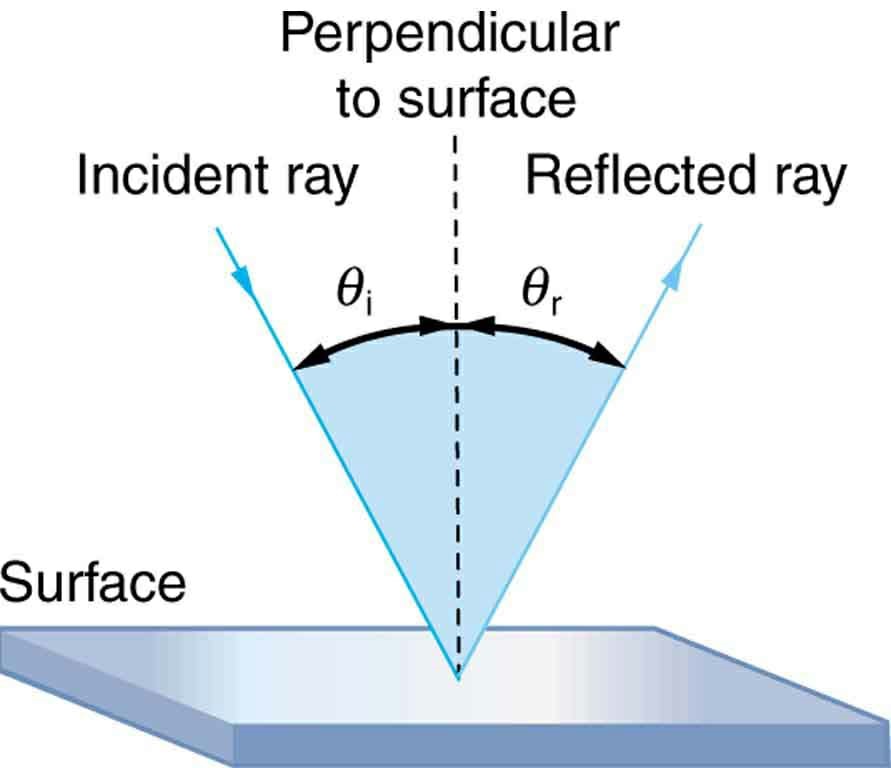
Here the diagram proves the law of reflection that is the angle of incidence is equal to the angle of reflection and the normal drawn at the interface of the two different media.
Types of the mirror:
Based on the laws of reflection, the designing of the mirrors are done. They are.:
1. Concave mirror: The surface of the reflection of a concave mirror is curves inwards just like the surface of a spoon. The images obtained are real and inverted. Concave mirrors are used in reflecting telescopes.
2. Convex mirror: The mirror surface is outwardly curved and can be compared to a balloon outside surface. The images obtained here are erect and virtual. These types of mirrors are mostly used as rearview mirrors.
Example of daily life phenomenon of reflection:
1. The red colour of the sunset which we can see in the sky.
2. The blue colour that is scattered throughout the sky.
And there are many more. The most important use is the ability to see objects that the reflection enables.
Importance of the laws of reflection:
Reflection and its laws have several applications and importance:
1. The use of mirrors has become possible because of laws of reflection as the mirrors exhibit the phenomenon of specular reflection whose principle is the first law of reflection.
2. The use of sonar to find great depths at sea and other places are also sones on the basis of the laws of reflection. The echoes which are made basically follow the reflection laws.
3. In the subject of geology, there is a wave named seismic waves. We come to know and acquire knowledge about these waves with the help of the laws of reflection.
